Rose Nolan: Breathing Helps – Artist & Curator Interviews
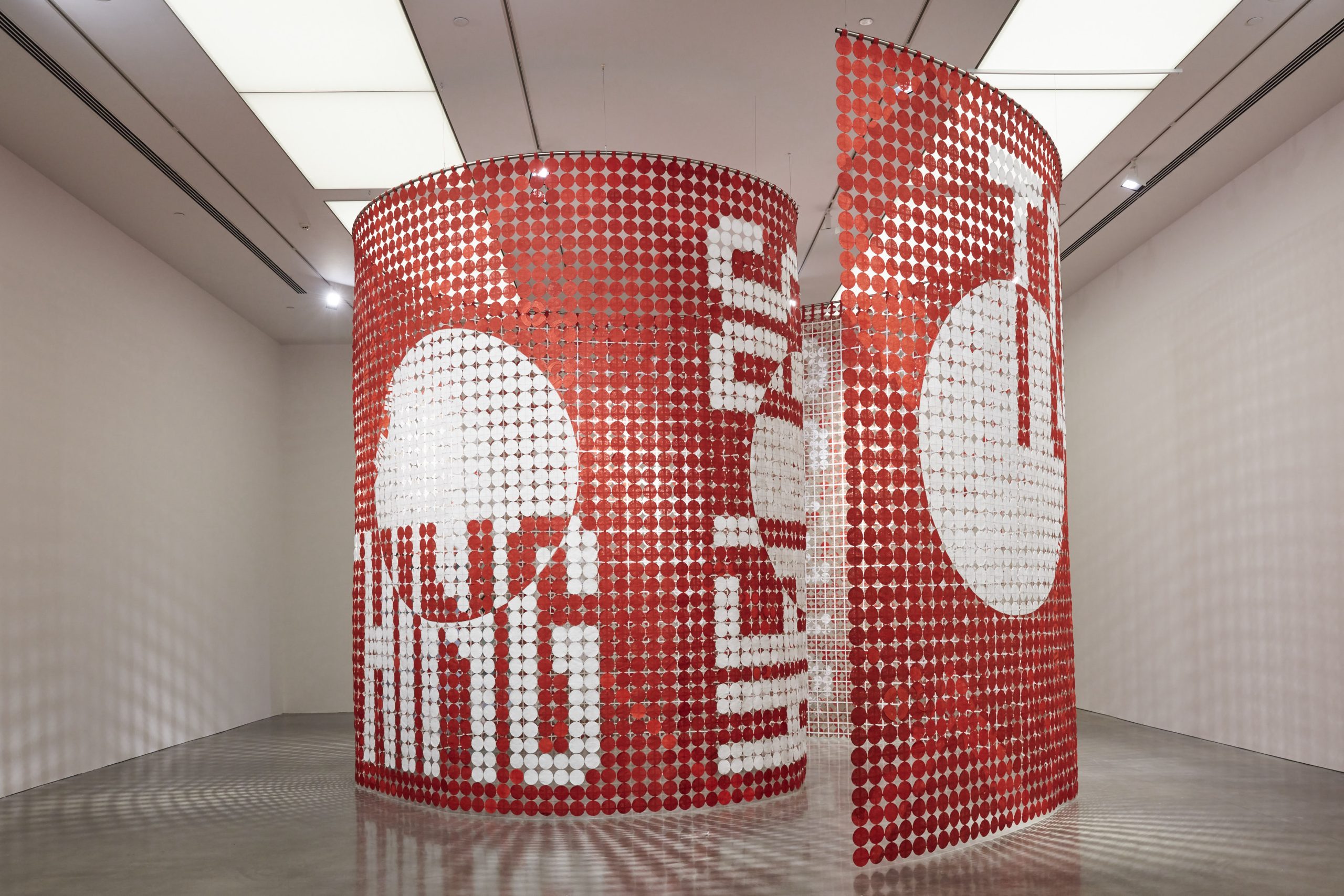
Information for Students and Teachers
Explore the exhibition through conversations with the curator and artist.
Rose Nolan, Artist
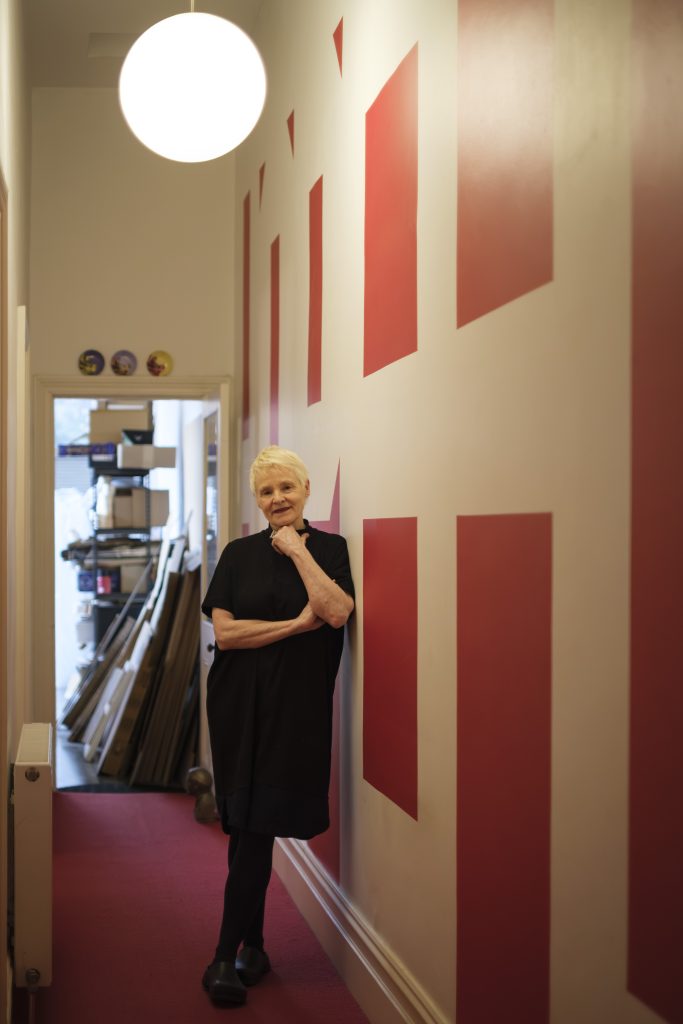
Photo: Suzanne Phoenix
TarraWarra Museum of Art: How did you decide upon the title and themes for this exhibition?
Rose Nolan: The title of the exhibition is drawn from one of its key works, To Keep Going Breathing Helps (circle work) 2016–17. In its abbreviated form, the phrase operates on multiple levels: it reminds the audience to breathe and take their time as they navigate their way through the exhibition; it resonates as a simple, universal truth—playful and yet fundamental; and it serves as a conceptual anchor, framing the key themes explored throughout the exhibition. Central to this is the notion of an elusive presence, characterised by the performativity of the artist in the studio as well as the viewer within the museum. Breathing Helps invites reflection on labour, persistence and endurance in both life and arts practice.
TWMA: How were the artworks selected for this exhibition? What were some of the processes behind these decisions?
RN: When Victoria Lynn invited me to present a survey exhibition, I saw an opportunity to take a different approach—one that resists the conventional, didactic chronology often associated with survey shows. Rather than suggesting a linear progression of practice—from early works to the most recent—this project brings together a selection of works that reflect on the implied performativity or elusive presence within my large-scale works. TarraWarra’s architecture and space offer a unique opportunity for this exploration—allowing these works, many previously exhibited in solo shows, to be experienced in conversation with each other. This exhibition brings together a mix of existing works—including loans from major public institutions such as the National Gallery of Australia in Canberra—alongside new commissions developed specifically for TarraWarra. Requesting loans from public collections often involves lengthy lead times and formal approvals, factors that inevitably shape the direction of the exhibition.
As part of the exhibition, I invited Melbourne-based artist Shelley Lasica to develop a new work that would unfold alongside the exhibition. This work will unfold as a series of performances at the opening and at select times for the duration of the exhibition. Rather than a response to or activation of Breathing Helps, Shelley’s work COLLOQUY telescopes in and out of the gallery spaces, offering choreographic thinking as a process to navigate the exhibition, while an accompanying physical map offers a set of possibilities for the audience to imagine a performance without having to be present for one. Her contribution extends the exhibition’s investigation into absent presence, proposing movement, memory and spatial interaction as ways of experiencing the work.
TWMA: How did you make decisions about the way the exhibition is laid out? Did any of the artworks’ materials, size or installation needs influence their placement or inclusion in this exhibition?
RN: I approach exhibition-making as an extension of my studio practice. Often, the gallery or museum is the first place I see my large-scale pieces fully realised, as they exist only in sections or plans/drawings within my studio prior to that. I’m interested in how an artwork both transforms and is transformed by the architectural and spatial context in which it’s shown. Each time a work is re-presented or re-staged it becomes something new — altered through time, its environment, its scale, its proximity to other works, and the characteristics of the site.
For Breathing Helps, I created a scale model of the gallery to test ideas and refine my thinking around placement. The scale of some works made them obvious selections for the Central gallery, while others offered more flexibility. Their suspension from the ceiling required close discussions with the exhibition manager and engineers to design hanging systems. The inclusion of loaned works from public collections introduced additional layers to the planning—especially around conservation requirements such as light sensitivity. To accommodate this, the large window had to be closed and the smaller windows along the vista space shaded. While these outcomes may not be my choice, all these considerations formed part of careful planning that allows the works to hold space, connect to one another, and invite a slow, unfolding experience for the viewer.
TWMA: Please describe and explain your preferred choice of materials, scale and techniques you use in your art practice.
RN: My practice is known for the use of everyday, accessible materials—cardboard, hessian, acrylic house paint—selected not only for their affordability and availability, but also for their capacity to carry meaning. These are materials I can source almost anywhere: found, salvaged, or recycled from packaging. From early on, this was both a practical and conceptual choice—a way of making my practice sustainable while also drawing on the historical and aesthetic significance of these ‘humble’ materials. There’s a lineage here that traces through Dada, Russian Constructivism and Arte Povera, where the use of ordinary materials became a way of disrupting traditional hierarchies of value and authorship. Hessian, for example, connects to both manual labour and postwar European abstraction; recycled cardboard holds traces of a previous life and introduces a sense of impermanence, fragility and immediacy.
Language—and text—also functions as material in my work. I’m interested in how words operate both as carriers of meaning and as graphic forms. Hand-painted, or cut from cardboard, text becomes embedded in the structure of the work—sometimes as a direct message, other times as a fragmented or illegible presence. This duality allows text to slip between being read and being seen, between linguistic communication and visual rhythm. I often draw on phrases that feel simultaneously personal and universal—suggestive rather than declarative—allowing room for multiple interpretations.
TWMA: Please share some creative methods you use in your art practice.
RN: Because my works shift in scale—from the intimate to the monumental—I’ve developed a modular approach to making. Constructing works in sections or components in my domestic studio allows them to be transported, assembled and adapted to specific spaces. This allows the work to expand and contract, to respond to context and architecture, and to remain open in its final form. My Flat Flower Work 2004–25 is an example of this strategy where the work ‘grows’ and changes each time it’s exhibited.
Repetition is also a central strategy in my practice. Often a single gesture or form, like the circle, is repeated across a surface or structure. This repetition is not just visual. The accumulation of a repeated gesture becomes a record of time, labour and process, producing a quiet, latent energy within these large-scale works. The durational aspect of this making resists speed, instead offering rhythm, insistence and contemplation.
My use of a deliberately limited colour palette—red and white—acts as a productive constraint. Rather than being restrictive, it liberates me from the decisions colour can require, allowing more focus on materiality, form and structure. Red and white are not neutral; they carry symbolic, emotional and cultural associations, and their contrast provides the clarity of geometric form. In this way, colour functions as another deliberate structural element within the works.
Fundamentally, my choice of everyday materials and my use of repeated gestures and constrained colour palettes are not just aesthetic strategies but forms of thinking-in-practice.
TWMA: Is there something important you can share with students about your journey to becoming a professional artist?
RN: I see my art practice as the ongoing interplay between thought and action, material and meaning. It’s helpful to understand that one’s art practice is not a fixed destination but an ongoing, iterative process of making, unmaking, reflecting, and doing again. I return to my materials—cardboard, hessian, house paint and text—working them through repetition, variation and scale. Through this engagement, I don’t just produce artworks; I uncover how and why I make them in the first place. Sometimes the process is focused and deliberate, other times it’s intuitive and playful. I’ve learned that being brave—trusting your instinct and following that initial impulse—is essential. Even if it doesn’t work out the first time, you’re always learning.
It’s about finding that thing that excites you and compels you to keep going. And it takes courage to follow that through, particularly when the outcome is uncertain, and life throws us ‘curveballs’. My practice is in constant conversation—with my peers, with art history, with the social and material world around me. To sustain an art practice over time is to remain open—to experimentation, to failure, to surprise.
Dr Victoria Lynn, Curator
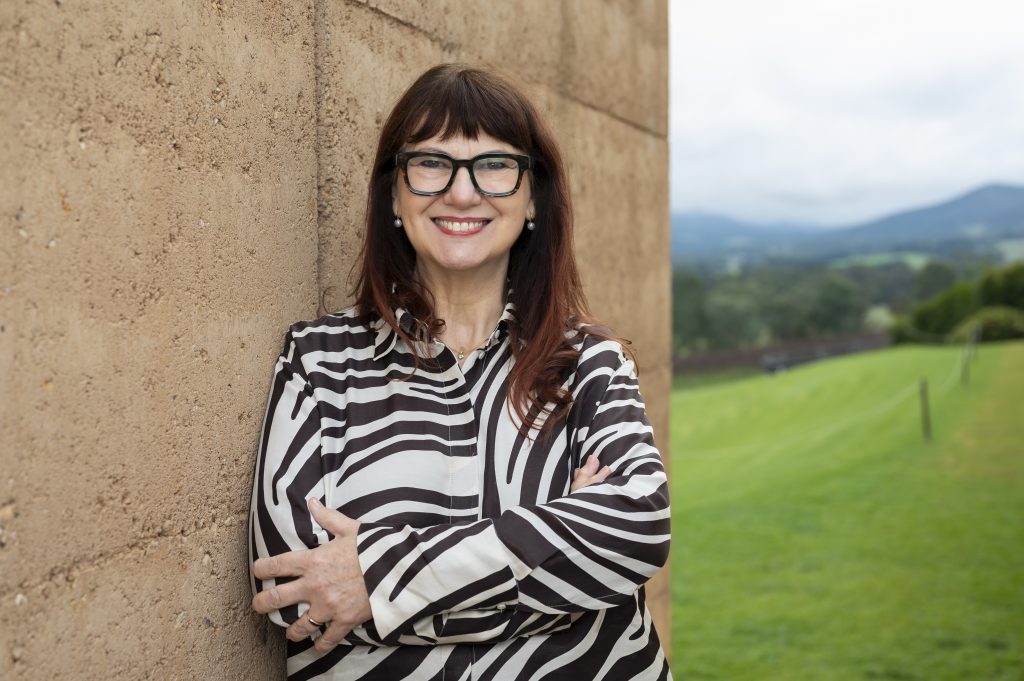
Photo: Tiffany Garvey
TarraWarra Museum of Art: What are your responsibilities in curating this exhibition?
Dr Victoria Lynn: I am the curator of the exhibition. This means that I selected Rose Nolan as an artist to feature in the exhibition at TarraWarra Museum of Art. In developing the ideas for the exhibition, we created a project for the space using both earlier and new works. I worked with Rose on the selection of the works for the exhibition, their location, the choice of writers for the catalogue and the co-publishing arrangement with Perimeter Books.
TWMA: How have you worked with the artist to create this exhibition?
VL: The starting point for any exhibition with a living artist is a series of conversations. Ideas and concepts take time to develop. A curator never knows as much as an artist does about their own work, so it is important to tease out the meanings of the work in conversation. Studio visits are essential, to form an understanding of the creative processes. I also begin with a visual image of how an exhibition will look in a space. In this instance, the spectacular presence of Rose’s very large-scale works was my starting point. Our museum has the height to enable these works to be shown together for the first time. In addition, it is important to read everything that has been written on the artist previously, as well as books and articles that relate to some of the artist’s concerns.
TWMA: How would you describe the ideas and themes addressed in this exhibition?
VL: Materiality: the work utilises everyday and accessible materials. This is both a practical consideration for the artist (cost and availability) as well as an ethical one (sustainability). In addition, most of the works are handmade by the artist.
Scale: the artist works in different scales, from very large to intimate. As such, the work shifts from immersive installations through to smaller works that possess a kind of pathos.
Choreography: the large-scale works encourage the visitor to move through the space in different ways—in and through, while also gazing up and down. The unique feature of this show is that Rose has invited the artist and choreographer Shelley Lasica to create a series of actions and performances that occur alongside the exhibition. The performers create their own choreography within the spaces of the museum and surrounds, utilising space in new ways.
Breathing: the title of the exhibition, Breathing Helps, derives from the work To Keep Going Breathing Helps (circle work). When the artist suggested the title of the show, I smiled. It was a wry smile, because the matter-of-fact reality of the phrase is funny. It also acknowledges the importance of women’s labour and the struggle, at times, to just get the job done. The repetitive act of making the large-scale works requires focus and endurance in which breathing does indeed help. Breathing Helps is a call to others to share in the journey as social beings. Breathing, speech, language and a shared space in which to experience these progressive manifestations of our first breath, are all present here.
Text: Rose uses phrases that she has often either overheard or read. These words are then upscaled in red and white so that they are difficult to read. Her phrases stretch the logic of reading from left to right. Words mirror, repeat, and fold back on themselves. As a result, the visitor can experience a kind of anxiety, or at the very least, frustration, or they can simply let go and enjoy the snippets of words and various tensions at play. It is no accident that the slicing and reassembling— the montages and collages—force viewers to engage bodily and intellectually with the work. This linguistic tension in the works encourages us to work harder to read, see and understand. We cannot take language for granted.
Red and White: the combination of red and white in Rose’s work brings together opposing symbolisms: red (the colour of revolution and passion) in combination with white (the colour of peace, surrender and purity) can cancel each other out. They also form a visual play between positive and negative space, creating a conceptual form of abstraction. The simplicity of working in two colours underlines the DIY aesthetic in her work. There is nothing mysterious in the use of the red—a common paint colour.
TWMA: What were your curatorial considerations in selecting artworks for this exhibition, and selecting artworks from different contexts in the artist’s career?
VL: Rose Nolan has, in many respects, curated her own exhibition. Some artists prefer to leave it to the curator to make a selection. Others use the opportunity of an exhibition to create a new project. In many ways, Rose Nolan has self-curated this exhibition.
TWMA: What considerations have influenced the relationships and placement between artworks in the exhibition?
VL: Certain works can only fit in certain locations. This is the constant juggle of exhibition design and planning—what is practical, and which artworks make sense with one another. This exhibition has been designed for the TarraWarra Museum’s spaces. It would be impossible to relocate the exhibition as it is to another museum, because it has been created in a very precise and bespoke manner. This is an important aspect for a destination museum like TarraWarra—our exhibitions need to be unique in order to encourage audiences to take that wonderful journey through the rolling hills of the Yarra Valley to see the works.
TWMA: What methods and considerations have been implemented in creating didactics about the theme, artist and artworks in this exhibition?
VL: Rose and I have worked in collaboration on the broad introduction to the exhibition. It is an ethical responsibility for curators to discuss and develop one’s thoughts and words with the artist.
TWMA: What themes and ideas addressed in this exhibition communicate with contemporary culture and society?
VL: In her book On Breathing, psychoanalyst Dr Jamieson Webster comments that our first breath is a product of the mother’s labour of birth, and breathing eventually transforms into speech. We depend on breathing for life, and for life, we depend on the air that we share. She writes:
Breathing is the space where extreme anxiety, the mysteries of the body and the scars of being born rear their head. Breathing eventually transmutes into language and the act of speaking is crucial to this story of breath where being born seems to need to happen at the very least, twice: first biologically, as a human mammal, and second, as a social animal that breathes in the air with others, and whose breathing can be impacted by them. *
While Rose Nolan is primarily a conceptual abstract artist, the wider notion of artistic labour, and the air that we share in the space of the exhibition and in conjunction with Shelley Lasica’s performance, has a resonance for all of humanity.
* Jamieson Webster, On Breathing (London: Peninsula Press, 2025), p. 25. The book was written in the wake of the author’s experience supporting those who struggled with breathing while in palliative care in New York City during the pandemic.
*****
Are you a teacher or educator? Join our Learning & Engagement mailing list to get occasional updates from our team about school tours, education resources, personal development sessions and other education updates.
Read more
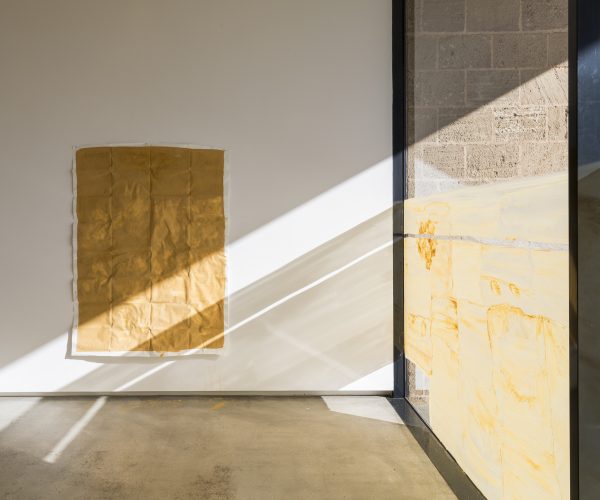

Curatorial conversation: Victoria Lynn on The Soils Project
A curatorial conversation TarraWarra Museum of Art Director, Victoria Lynn speaks about The Soils Project and this particular iteration of an ongoing research-based experimental project developed in collaboration with leading contemporary arts museum the Van Abbemuseum in Eindhoven, the Netherlands and Struggles for Sovereignty, a collective based in Yogyakarta, Indonesia. The Soils Project arises from […]
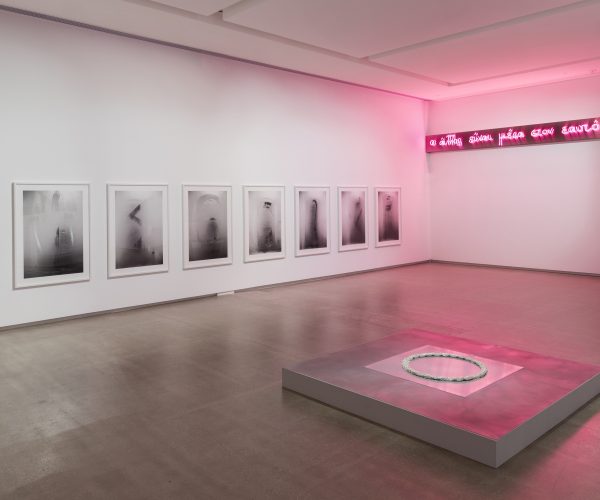

The making of (SC)OOT(ER)ING around Su san Cohn and Eugenia Raskopoulos
Information for Students and Teachers. Learn more about the exhibition (SC)OOT(ER)ING around as the TarraWarra Learning and Engagement team investigate the making of the exhibition with craft artist Su san Cohn, visual artist Eugenia Raskopoulos, and exhibition curator and Museum director, Dr Victoria Lynn. What is the title of this exhibition and how was it decided […]